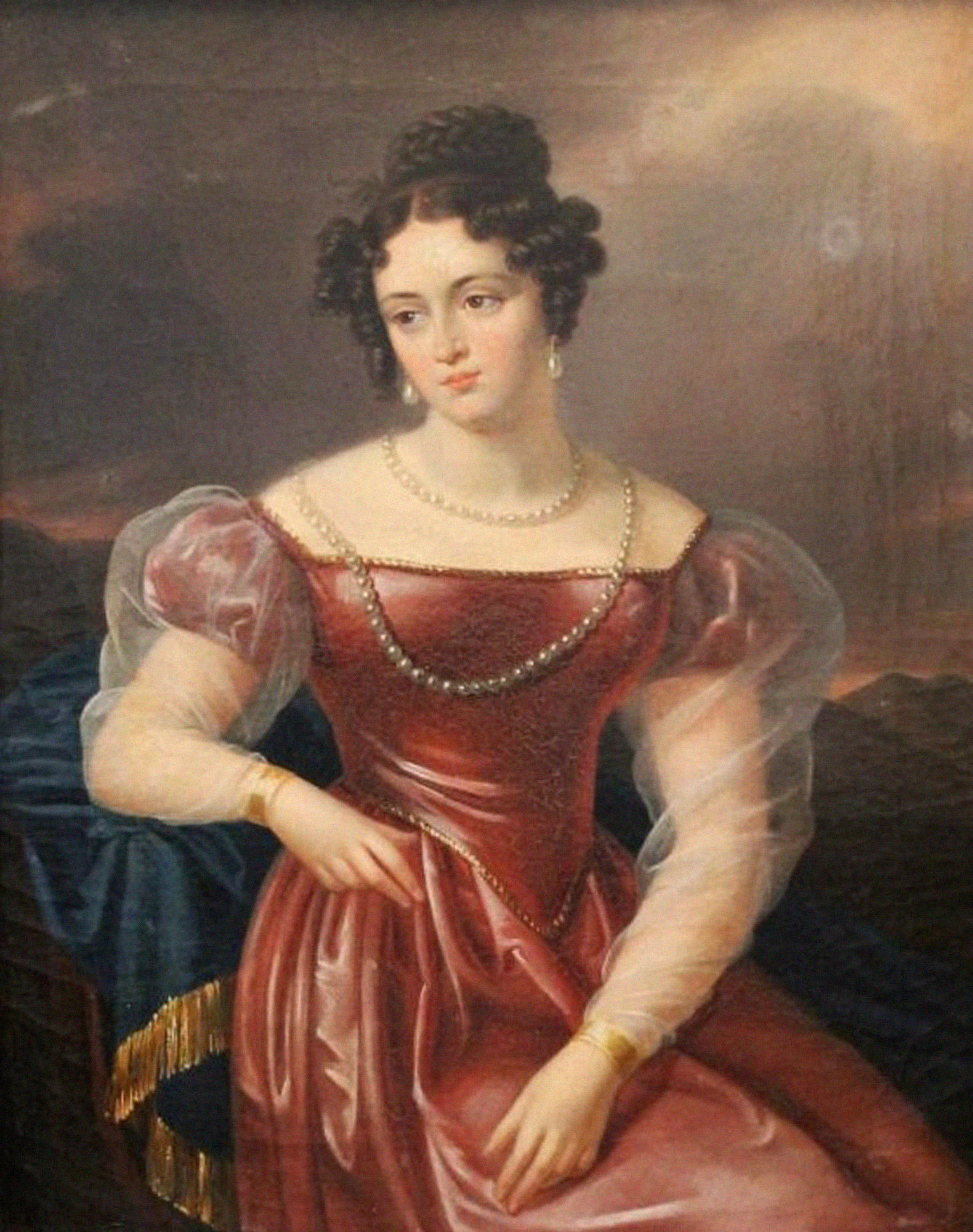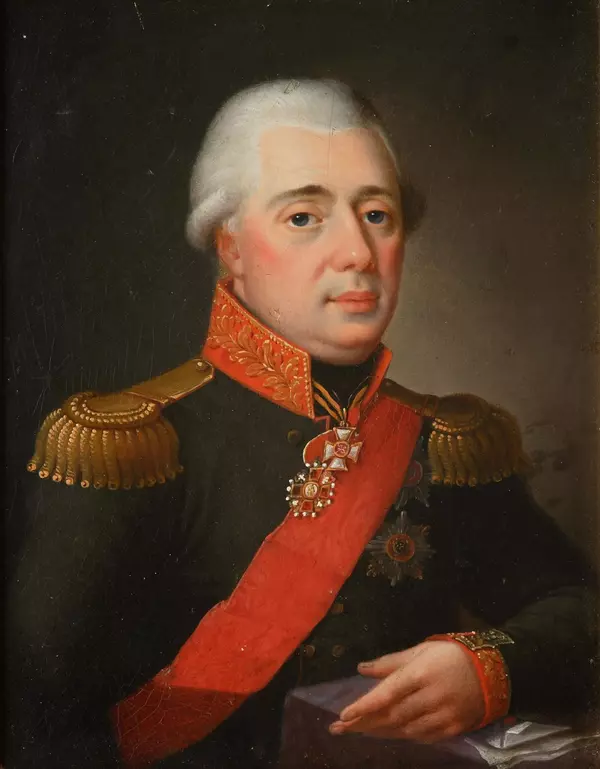Polish artist Joseph Oleshkevich was born in 1777 near Minsk in the family of a provincial musician. He studied at the University of Wilno at the Faculty of Fine Arts, and later improved his skills in Paris and Dresden. His teachers were such recognized artists Jean Auguste Dominique Ingres and Jacques-Louis David.
Oleshkevich worked for a long time in St. Petersburg, where he mainly dealt with painting of portraits. Among his models were members of the imperial house, and the artist himself was a highly educated person, he had deep encyclopedic knowledge, enjoyed respect in high society.
In addition to portraits, Joseph Ivanovich created paintings on historical, mythological and religious themes. Oleshkevich was particularly famous in St. Petersburg for his high position in the Masonic community. In 1822 he became the head of the St. Petersburg Lodge ‘White Eagle.’
The portrait of Sophia Kiselyova is a vivid example of the romantic direction in the portrait painting of the first half of the 19th century. The painting depicts Sofia Stanislavovna Kiselyova, nee Pototskaya.
Sophia was the daughter of Polish tycoon Stanislav Schensny Pototsky and Sofia Konstantinovna Pototsky, nicknamed Glyavone, a famous beauty and adventurer. Her childhood was spent in family palaces in Tulchin and Uman on the territory of modern Ukraine. She spent part of the year with her family in Crimea, at their mother’s estate, located in Massandra.
At 17, the girl began to attend Petersburg balls, where, like her mother, she was famous for beauty. The future countess met Alexander Pushkin, who noted her “poetic imagination.” According to some scholars of Pushkin’s work, it was Sophia who became the muse of the great poet, who inspired him to write the poem ‘The Fountain of Bakhchisarai’. Sofya Stanislavovna told Pushkin the Crimean legend about the tragic love of Khan Girey and the Polish Maria, in whose honour, after her death, a monument was erected - a fountain of tears.
According to the poet’s commentators, Pushkin’s poem ‘Platonic Love’ (1819) is dedicated to her.
In 1821, in Odessa, Sophia married the chief of staff of the second army, General Pavel Kiselyov, but this marriage was unsuccessful. Since 1834, the couple began to live separately.
Sophia left her native Tulchin and settled in Paris. Having inherited a tremendous fortune, the old countess became interested in gambling and subsequently became the prototype of Antonida Vasilyevna Tarasevicheva in Dostoevsky’s novel “The Gambler”.
Oleshkevich worked for a long time in St. Petersburg, where he mainly dealt with painting of portraits. Among his models were members of the imperial house, and the artist himself was a highly educated person, he had deep encyclopedic knowledge, enjoyed respect in high society.
In addition to portraits, Joseph Ivanovich created paintings on historical, mythological and religious themes. Oleshkevich was particularly famous in St. Petersburg for his high position in the Masonic community. In 1822 he became the head of the St. Petersburg Lodge ‘White Eagle.’
The portrait of Sophia Kiselyova is a vivid example of the romantic direction in the portrait painting of the first half of the 19th century. The painting depicts Sofia Stanislavovna Kiselyova, nee Pototskaya.
Sophia was the daughter of Polish tycoon Stanislav Schensny Pototsky and Sofia Konstantinovna Pototsky, nicknamed Glyavone, a famous beauty and adventurer. Her childhood was spent in family palaces in Tulchin and Uman on the territory of modern Ukraine. She spent part of the year with her family in Crimea, at their mother’s estate, located in Massandra.
At 17, the girl began to attend Petersburg balls, where, like her mother, she was famous for beauty. The future countess met Alexander Pushkin, who noted her “poetic imagination.” According to some scholars of Pushkin’s work, it was Sophia who became the muse of the great poet, who inspired him to write the poem ‘The Fountain of Bakhchisarai’. Sofya Stanislavovna told Pushkin the Crimean legend about the tragic love of Khan Girey and the Polish Maria, in whose honour, after her death, a monument was erected - a fountain of tears.
According to the poet’s commentators, Pushkin’s poem ‘Platonic Love’ (1819) is dedicated to her.
In 1821, in Odessa, Sophia married the chief of staff of the second army, General Pavel Kiselyov, but this marriage was unsuccessful. Since 1834, the couple began to live separately.
Sophia left her native Tulchin and settled in Paris. Having inherited a tremendous fortune, the old countess became interested in gambling and subsequently became the prototype of Antonida Vasilyevna Tarasevicheva in Dostoevsky’s novel “The Gambler”.



